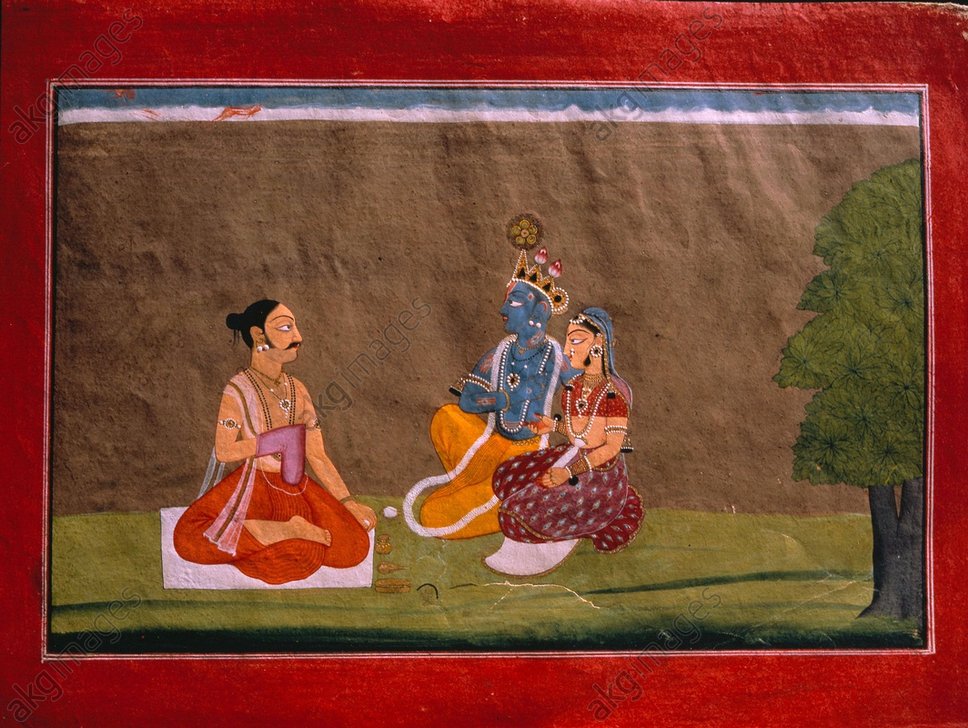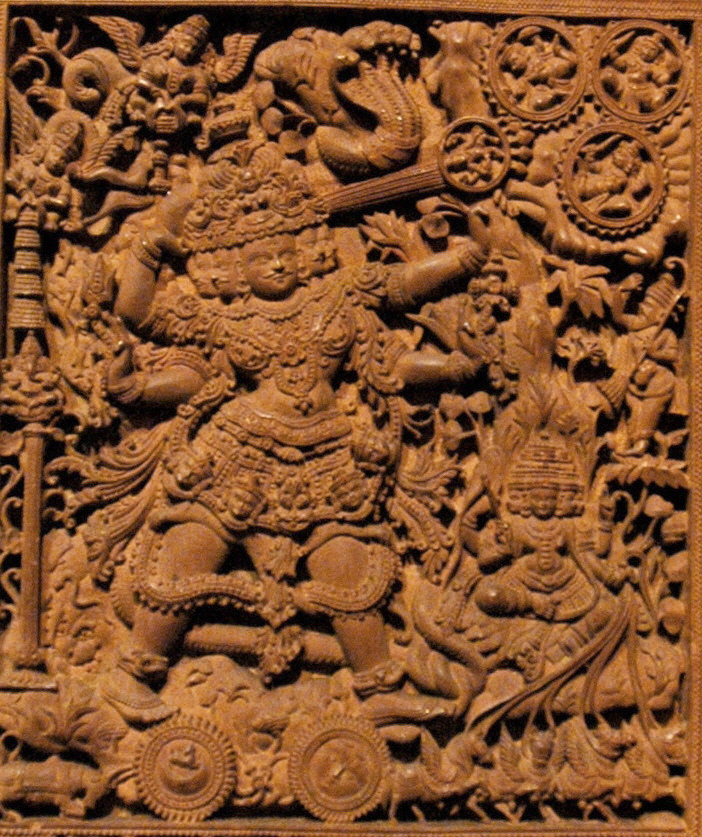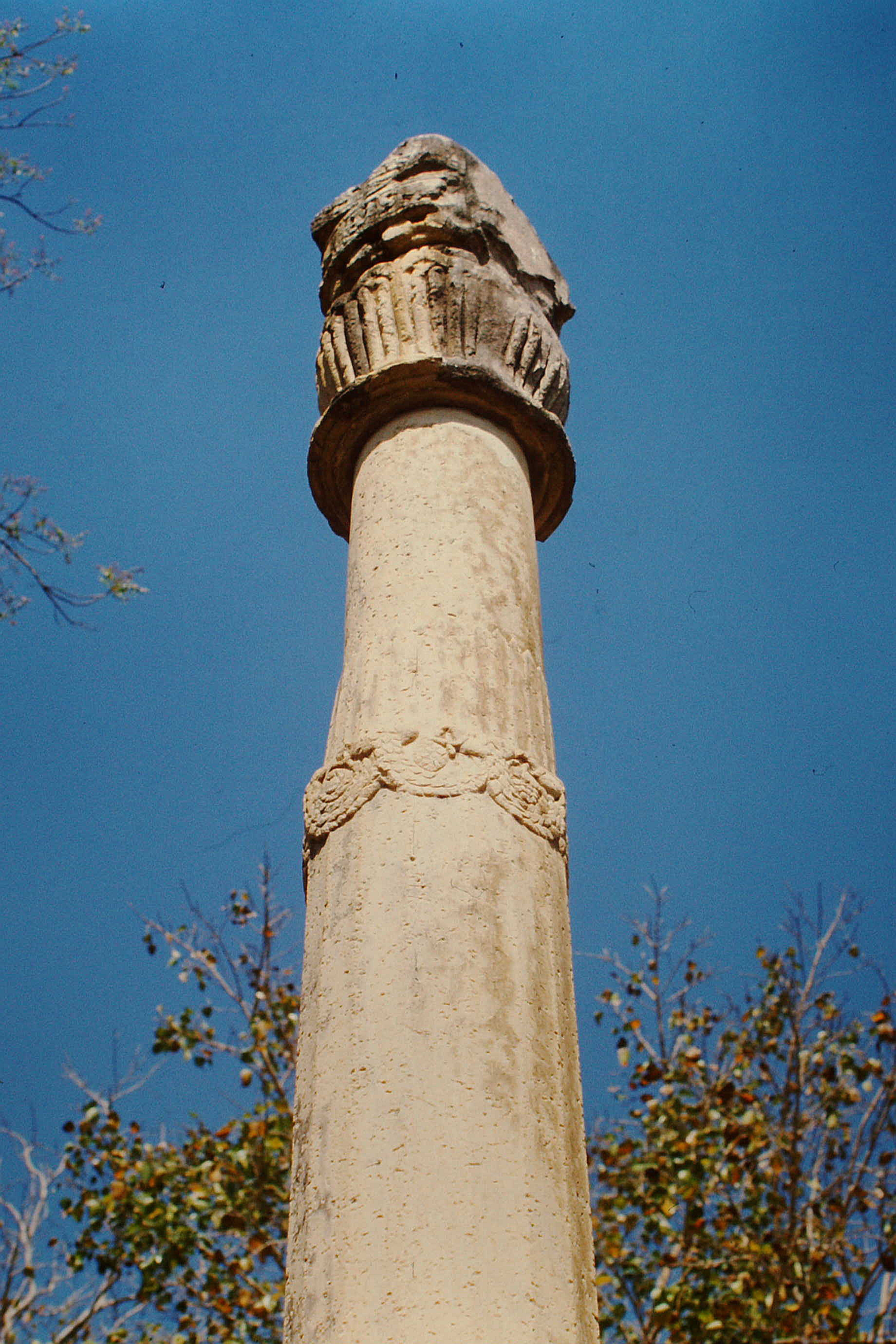|
Radha-Krishna
Radha-Krishna (IAST , sa, राधा कृष्ण) are collectively known within Hinduism as the combined forms of feminine as well as the masculine realities of God. Krishna and Radha are the primeval forms of God and his pleasure potency (Hladini Shakti), respectively, in several Vaishnavite schools of thought. In Krishnaite traditions of Vaishnavism, Krishna is referred to as '' Svayam Bhagavan'' and Radha is illustrated as the primeval potency of the three main potencies of God, ''Hladini (immense spiritual bliss), Sandhini (eternality) and Samvit (existential consciousness)'' of which Radha is an embodiment of the feeling of love towards the almighty Lord Krishna (''Hladini''). With Krishna, Radha is acknowledged as the Supreme Goddess. It is said that Krishna is only satiated by devotional service in loving servitude and Radha is the personification of devotional service to the supreme lord. Various devotees worship her with the understanding of her merciful natur ... [...More Info...] [...Related Items...] OR: [Wikipedia] [Google] [Baidu] |
Radha
Radha ( sa, राधा, ), also called Radhika, is a Hindu goddess and the chief consort of the god Krishna. She is worshiped as the goddess of love, tenderness, compassion, and devotion. She is the avatar of goddess Lakshmi and is also described as the chief of the ''Gopis'' (milkmaids). During Krishna's youth, she appears as his lover and companion. Many traditions and scriptures accord Radha the status of the eternal consort and wife of Krishna. Radha, as a supreme goddess, is considered as the female counterpart and the internal potency (''hladini shakti'') of Krishna, who resides in Goloka, the celestial abode of Radha Krishna. Radha is said to accompany Krishna in all his incarnations. In Radha Vallabh Sampradaya and Haridasi Sampradaya, only Radha is worshiped as the supreme deity. Elsewhere, she is venerated with Krishna as his principal consort in Nimbarka Sampradaya, Pushtimarg, Mahanam Sampraday, Swaminarayan Sampradaya, Vaishnava-Sahajiya and Gaudiya Vaishnavis ... [...More Info...] [...Related Items...] OR: [Wikipedia] [Google] [Baidu] |
Janmashtami
Krishna Janmashtami , also known simply as Krishnashtami, Janmashtami, or Gokulashtami, is an annual Hindu festival that celebrates the birth of Krishna, the eighth avatar of Vishnu. According to the Hindu lunisolar calendar, it is observed on the eighth tithi (Ashtami) of the Krishna Paksha (dark fortnight) of Shraavana Masa (according to the amanta tradition) or Bhadrapada Masa (according to the purnimanta tradition). This overlaps with August or September of the Gregorian calendar. It is an important festival, particularly in the Vaishnavism tradition of Hinduism. Dance-drama enactments of the life of Krishna according to the ''Bhagavata Purana'' (such as Rasa Lila or Krishna Lila), devotional singing through the midnight when Krishna was born, fasting (''upavasa''), a night vigil (Ratri ''Jagaran''), and a festival (Mahotsav) on the following day are a part of the Janmashtami celebrations. It is celebrated particularly in Mathura and Vrindavan, along with major Vaishn ... [...More Info...] [...Related Items...] OR: [Wikipedia] [Google] [Baidu] |
Kartik Purnima
Kartika Purnima is a Hindu, Sikh and Jain cultural festival that is celebrated on Purnima (full moon day), the 15th (or 30th) lunar day of the month of Kartika. It falls in November or December of the Gregorian calendar and is also known as Tripurari Purnima or Deva-Deepawali, the gods' festival of lights. Karthika Deepam is a related festival that is celebrated in South India and Sri Lanka on a different date. Significance Radha-Krishna In Vaishnavite tradition, this day is considered significant and special for the worship of both Radha and Krishna. It is believed that on this day, Radha-Krishna performed Raslila with their Gopis. At Jagannath Temple, Puri and all other Radha-Krishna temples, a sacred vow is observed throughout Kartika, and performances of Raslila are organized on the day of Kartik Purnima. According to other legends, Krishna worshipped Radha on this day. Shiva 'Tripuri Purnima' or 'Tripurari Purnima' derives its name from Tripurari – the foe o ... [...More Info...] [...Related Items...] OR: [Wikipedia] [Google] [Baidu] |
Krishnaism
Krishnaism (IAST: ''Kṛṣṇaism'') is a large group of independent Hinduism, Hindu traditions—sampradayas related to Vaishnavism—that center on the devotion to Krishna as ''Svayam Bhagavan'', ''Ishvara'', ''Para Brahman'', the source of all reality, who is not an avatar of Vishnu. This is its difference from such Vaishnavite groupings as Sri Vaishnavism, Sadh Vaishnavism, Ramanandi, Ramaism, Radha Vallabh Sampradaya, Radhaism, Sitaism etc. There is also a personal Krishnaism, that is devotion to Krishna outside of any tradition and community, as in the case of the saint-poet Meera Bai. Leading scholars do not define Krishnaism as a suborder or offshoot of Vaishnavism, considering it a parallel and no less ancient current of Hinduism. The teachings of the ''Bhagavad Gita'' can be considered as the first Krishnaite system of theology. Krishnaism originated in the late centuries BCE from the followers of the heroic Vāsudeva Krishna, which amalgamated several centuries later ... [...More Info...] [...Related Items...] OR: [Wikipedia] [Google] [Baidu] |
Vaishnavism
Vaishnavism ( sa, वैष्णवसम्प्रदायः, Vaiṣṇavasampradāyaḥ) is one of the major Hindu denominations along with Shaivism, Shaktism, and Smartism. It is also called Vishnuism since it considers Vishnu as the sole Para Brahman, supreme being leading all other Hindu deities, i.e. ''Mahavishnu''. Its followers are called Vaishnavites or ''Vaishnava''s (), and it includes sub-sects like Krishnaism and Ramaism, which consider Krishna and Rama as the supreme beings respectively. According to a 2010 estimate by Johnson and Grim, Vaishnavism is the largest Hindu sect, constituting about 641 million or 67.6% of Hindus. The ancient emergence of Vaishnavism is unclear, and broadly hypothesized as a History of Hinduism, fusion of various regional non-Vedic religions with Vishnu. A merger of several popular non-Vedic theistic traditions, particularly the Bhagavata cults of Vāsudeva, Vāsudeva-krishna and ''Gopala-Krishna, Gopala-Krishna'', and Narayana, ... [...More Info...] [...Related Items...] OR: [Wikipedia] [Google] [Baidu] |
Krishna
Krishna (; sa, कृष्ण ) is a major deity in Hinduism. He is worshipped as the eighth avatar of Vishnu and also as the Supreme god in his own right. He is the god of protection, compassion, tenderness, and love; and is one of the most popular and widely revered among Indian divinities. Krishna's birthday is celebrated every year by Hindus on Krishna Janmashtami according to the lunisolar Hindu calendar, which falls in late August or early September of the Gregorian calendar. The anecdotes and narratives of Krishna's life are generally titled as ''Krishna Leela''. He is a central character in the ''Mahabharata'', the '' Bhagavata Purana'', the ''Brahma Vaivarta Purana,'' and the '' Bhagavad Gita'', and is mentioned in many Hindu philosophical, theological, and mythological texts. They portray him in various perspectives: as a god-child, a prankster, a model lover, a divine hero, and the universal supreme being. Quote: "Krsna's various appearances as a di ... [...More Info...] [...Related Items...] OR: [Wikipedia] [Google] [Baidu] |
Naradiya Purana
The ''Naradiya Purana'' ( sa, नारदीय पुराण, ) or ''Narada Purana'' ( sa, नारद पुराण), are two Vaishnavism texts written in Sanskrit language. One of the text is termed as the Major Purana, also called Mahapurana while the other is termed as a Minor Purana (''Upapurana''), also referred as ''Brihannaradiya Purana.'' Unlike most Puranas that are encyclopedic, the Brihannaradiya text is focussed almost entirely on Vishnu worship, while the Naradiya text is a compilation of 41 chapters (20%) on Vishnu Worship and rest of the chapters (80%) cover a wide range of topics including a large compilation of ''Mahatmya'' (travel guides) to temples and places along river Ganga and neighbouring regions. The ''Naradiya Purana'' is notable for dedicating eighteen chapters on other Puranas, one entire chapter summarizing each major Purana. It is also notable for its verses extolling Buddha in chapter 1.2. History Manuscripts of nearly all the Major ... [...More Info...] [...Related Items...] OR: [Wikipedia] [Google] [Baidu] |
Devi-Bhagavata Purana
The Devi Bhagavata Purana ( sa, देवी भागवतपुराणम्, '), also known as the Srimad Devi Bhagavatam, Srimad Bhagavatam, Bhagavata Purana or simply ''Devi Bhagavatam'', is one of the eighteen Mahapuranas of Hinduism. Composed in Sanskrit by Veda Vyasa. The text is considered as a major purana for Devi worshippers. It promotes '' bhakti'' (devotion) towards Mahadevi, integrating themes from the Shaktadvaitavada tradition (syncretism of Samkhya and Advaita Vedanta. literally, the path of nondualistic Shakti). The purana consists of twelve cantos (sections) with 318 chapters. Along with '' Devi Mahatmya'', it is one of the most important works in Shaktism, a tradition within Hinduism that reveres Devi or Shakti (Goddess) as the primordial creator of the universe and the Brahman (ultimate truth and reality). It celebrates the divine feminine as the origin of all existence, the creator, the preserver and the destroyer of everything, as well as the ... [...More Info...] [...Related Items...] OR: [Wikipedia] [Google] [Baidu] |
Gopala Tapani Upanishad
The ''Gopala Tapani Upanishad'' () is a Sanskrit text, and one of the later Upanishads attached to the Atharvaveda. The Gopāla-Tāpanī is one of the four ''Tāpinī'' Upanishads (''Nṛsiṁha'', ''Rāma'', ''Tripurā,'' and ''Gopāla''). This Vaishnava Upanishad belongs to the Tandya school of the Atharvaveda. Like the Gopala-Tapani Upanishad is an anthology of texts that must have pre-existed as separate texts, and were edited into a larger text by one or more ancient Indian scholars. The precise chronology of Gopala-Tapani Upanishad is uncertain, and it is variously dated to have been composed by the 8th to 6th century BCE in India.Steven Rosen (2006), Essential Hinduism, Praeger, , page 218 It is one of the largest Upanishadic compilations, and has eight Prapathakas (literally lectures, chapters), each with many volumes, and each volume contains many verses.Vol II, pp. 809-888. He has translated the Rāma Pūrva and Uttara-tāpinī and the Nṛsiṁha Pūrva and Uttara-t ... [...More Info...] [...Related Items...] OR: [Wikipedia] [Google] [Baidu] |
Shiva Purana
The ''Shiva Purana'' is one of eighteen major texts of the ''Purana'' genre of Sanskrit texts in Hinduism, and part of the Shaivism literature corpus. It primarily revolves around the Hindu god Shiva and goddess Parvati, but references and reveres all gods. The ''Shiva Purana'' asserts that it once consisted of 100,000 verses set out in twelve Samhitas (Books), however the Purana adds that it was abridged by Sage Vyasa before being taught to Romaharshana. The surviving manuscripts exist in many different versions and content, with one major version with seven books (traced to South India), another with six books, while the third version traced to the medieval Bengal region of the Indian subcontinent with no books but two large sections called ''Purva-Khanda'' (Previous Section) and ''Uttara-Khanda'' (Later Section). The two versions that include books, title some of the books same and others differently. The Shiva Purana, like other Puranas in Hindu literature, was likely a liv ... [...More Info...] [...Related Items...] OR: [Wikipedia] [Google] [Baidu] |
Padma Purana
The ''Padma Purana'' ( sa, पद्मपुराण or पाद्मपुराण, or ) is one of the eighteen Major Puranas, a genre of texts in Hinduism. It is an encyclopedic text, named after the lotus in which creator god Brahma appeared, and includes large sections dedicated to Vishnu, as well as significant sections on Shiva and Shakti. The manuscripts of Padma Purana have survived into the modern era in numerous versions, of which two are major and significantly different, one traced to eastern and the other to western regions of India. It is one of the voluminous text, claiming to have 55,000 verses, with the actual surviving manuscripts showing about 50,000. The style of composition and textual arrangement suggest that it is likely a compilation of different parts written in different era by different authors. The text includes sections on cosmology, mythology, genealogy, geography, rivers and seasons, temples and pilgrimage to numerous sites in India – ... [...More Info...] [...Related Items...] OR: [Wikipedia] [Google] [Baidu] |
Brahmavaivarta Purana
The ''Brahmavaivarta Purana'' ( sa, ब्रह्मवैवर्त पुराण; ) is a voluminous Sanskrit text and a major Purana (''Maha-purana'') of Hinduism. It is an important Vaishnavism text. This Purana majorly centers around the Hindu deities Radha and Krishna. Although a version may have existed in late 1st millennium CE, its extant version was likely composed in the Bengal region of Indian subcontinent. Later, it was likely revised somewhere in South India. Numerous versions of this Purana exist and are claimed to be the part of manuscripts of the ''Brahmavaivarta Purana'' or the ''Brahmakaivarta Purana''. The text is notable for identifying Krishna as the supreme reality and asserting that all gods such as Vishnu, Shiva, Brahma, Ganesha are one and the same and in fact, all are the incarnations of Krishna. Goddesses like Radha, Durga, Lakshmi, Saraswati and Savitri are asserted to be equivalent and are mentioned as the incarnations of Prakruti in this ... [...More Info...] [...Related Items...] OR: [Wikipedia] [Google] [Baidu] |







%2C_folio_3_from_the_Shiva_Purana%2C_c._1828.jpg)

